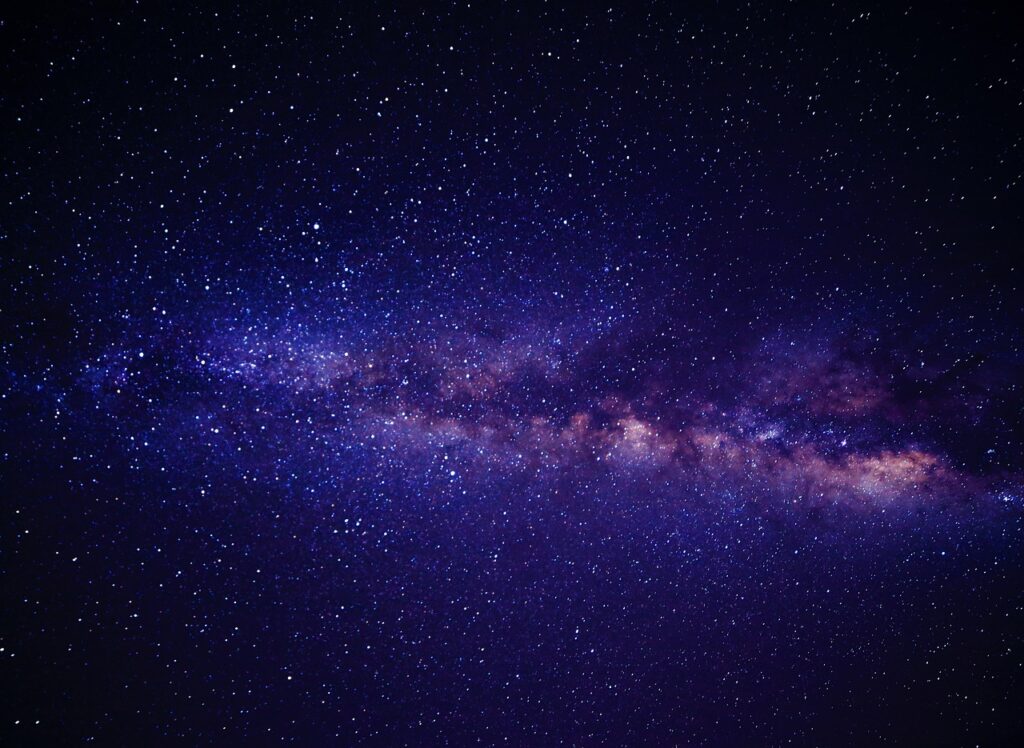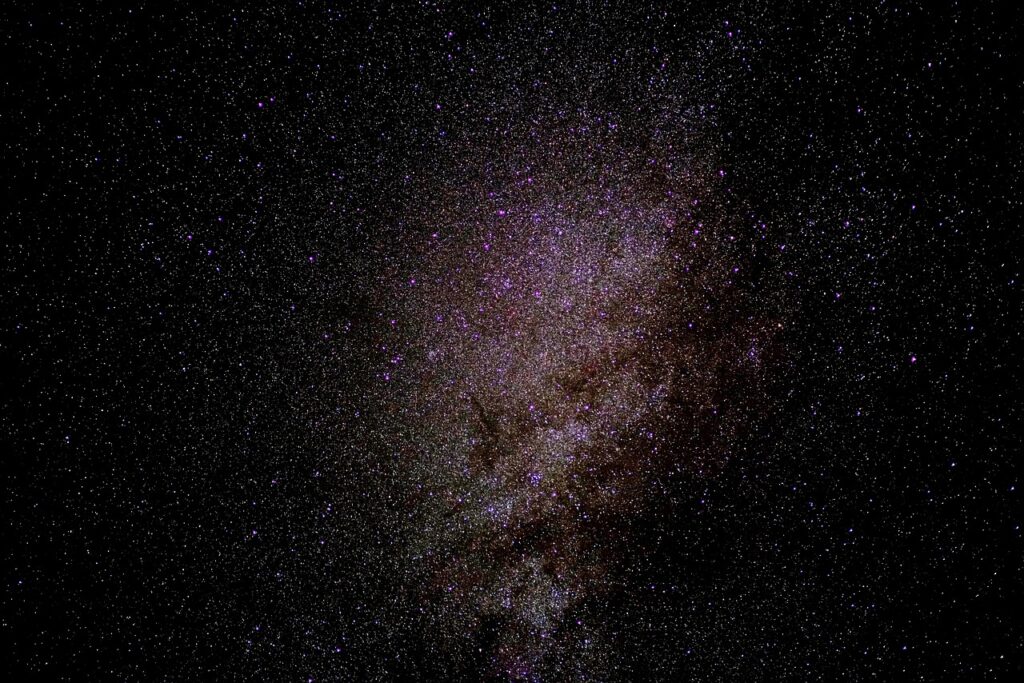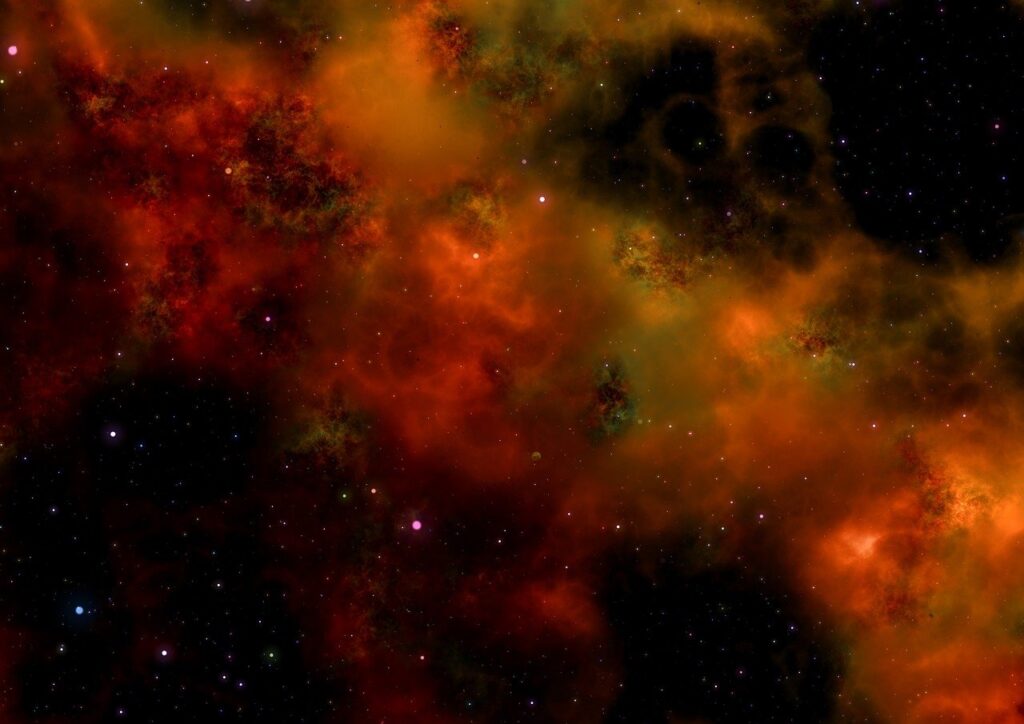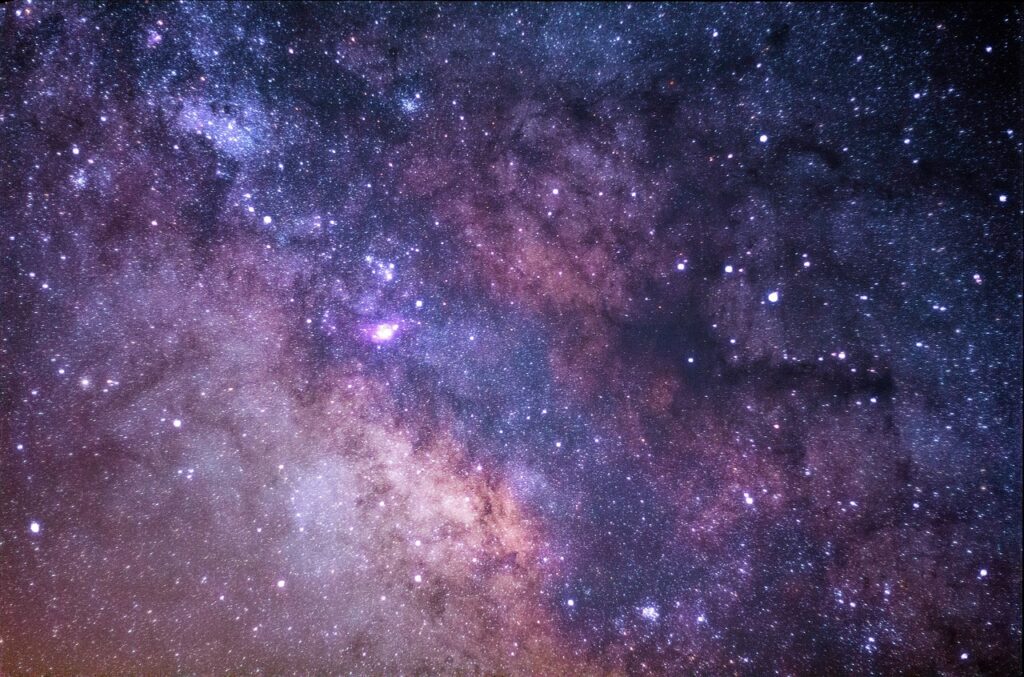Gazing up at the night sky, it’s easy to feel a profound sense of wonder. The countless pins of light, each a distant sun, have captivated humanity for millennia, inspiring myths, guiding journeys, and driving scientific inquiry. These luminous celestial bodies, seemingly immutable and endless, hold secrets far more intricate and dynamic than our ancestors could ever have imagined.
Yet, beyond their serene twinkle lies a universe of astonishing facts and mind-bending processes. From their violent births in swirling clouds of gas to their dramatic, often cataclysmic, ends, stars are not just silent observers but active participants in the cosmic dance, forging the very elements that make up our world and ourselves. They are the engines of the universe, constantly evolving and reshaping the cosmos around them.
Prepare to embark on an enlightening journey through the foundational wonders of stars. We’ll peel back the layers of cosmic mystery, exploring their fundamental nature, how they first came to be, and how humanity’s understanding of these distant suns evolved from ancient observations to the groundbreaking scientific discoveries that began to unlock their deepest secrets. It’s a story of curiosity, innovation, and the relentless pursuit of knowledge that continues to redefine our place in the vast stellar tapestry.
1. **The Fundamental Nature of Stars: Luminous Spheroids of Plasma**
At its most basic, a star is a truly magnificent entity: a luminous spheroid of plasma, held together by its own immense self-gravity. This isn’t just a fancy description; it’s the core definition that distinguishes a star from other celestial objects. Think of it as a gigantic, self-sustaining nuclear furnace, burning brightly in the vacuum of space, constantly battling the inward pull of its own gravity with the outward pressure generated by its incredible internal heat.
Our own Sun is the nearest example, a G-type main-sequence star, and a perfect illustration of this fundamental nature. For those countless other stars we see peppering the night sky, their immense distances from Earth transform them into mere fixed points of light, their true scale and fiery brilliance diminished by the vast cosmic expanse. It’s a humbling reminder of the sheer distances involved in astronomy.
Speaking of numbers, the scale of stars in the observable universe is almost incomprehensible. Astronomers estimate there are an astonishing 10^22 to 10^24 stars out there, a figure that dwarfs the number of sand grains on all the beaches of Earth. Yet, despite this staggering abundance, only about 4,000 of these stars are actually visible to the eye from our planet, and every single one of them resides within our very own Milky Way galaxy. This makes those visible stars incredibly special, offering us a glimpse into the cosmic grandeur surrounding us.
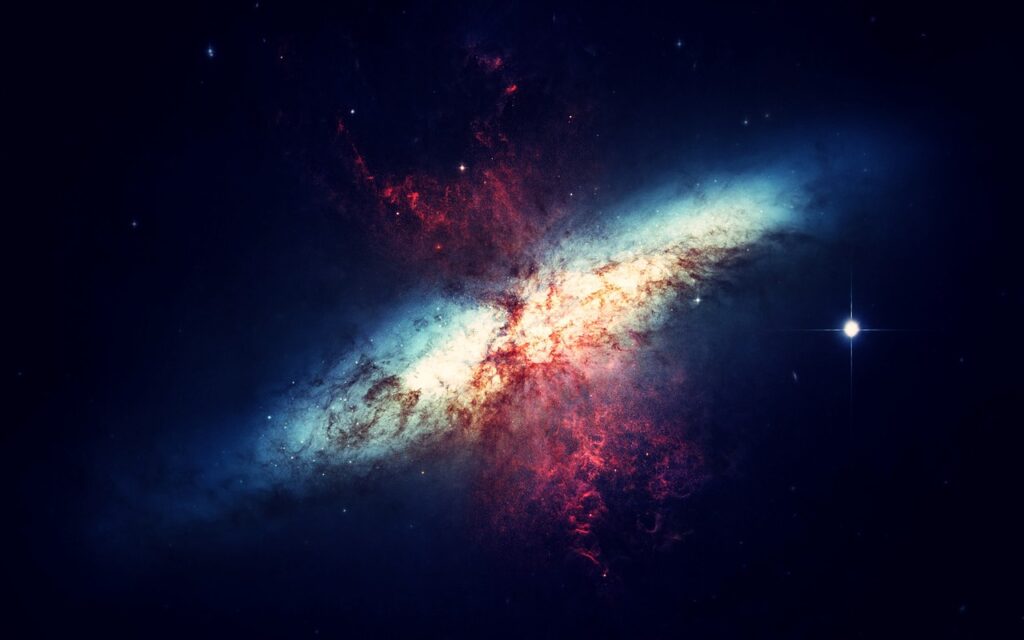
2. **The Cosmic Cradle: How Stars Begin Their Lives**
Before a star can ignite, it must first be born, and its life begins in a truly spectacular fashion: with the gravitational collapse of a gaseous nebula. Imagine vast, cold clouds of material, predominantly hydrogen and helium, laced with just a few percent of heavier elements. These cosmic nurseries, often called molecular clouds, are the fertile ground where new stars take shape, a process driven by the relentless pull of gravity.
What triggers such a collapse? It often starts with gravitational instability within the molecular cloud, perhaps nudged by the compression of clouds by radiation from massive stars, expanding bubbles in the interstellar medium, or even the collision of different molecular clouds or entire galaxies. When a specific region within this cloud reaches a sufficient density of matter, meeting the criteria for what’s known as Jeans instability, it becomes self-gravitating and begins its inevitable plunge inward, collapsing under its own immense gravitational force.
As this dense globule collapses, often forming distinct “Bok globules,” the gravitational energy is converted into heat, causing the temperature to soar. Eventually, this protostellar cloud achieves a stable state of hydrostatic equilibrium, forming a glowing protostar at its core. These pre-main-sequence stars are frequently enveloped by a swirling protoplanetary disk, the very stuff from which planets may eventually form, and they derive their initial energy mainly from the ongoing conversion of gravitational energy. This gravitational contraction can last for about 10 million years for a star like our Sun, or even up to 100 million years for a smaller red dwarf. During this early phase, younger stars less massive than 2 solar masses are known as T Tauri stars, while those with greater mass are called Herbig Ae/Be stars, both types emitting powerful jets of gas that help shed angular momentum and can create small patches of nebulosity known as Herbig–Haro objects, dramatically shaping their surroundings.
3. **A Star’s Lifespan: The Thermonuclear Heart of the Cosmos**
Once a star has formed and contracted, it settles into the longest and most stable phase of its existence: the main sequence. For the vast majority of its active life, a star shines brightly due to the incredible process of thermonuclear fusion occurring in its core. This is where hydrogen atoms are fused together, forming helium, in a reaction that releases enormous amounts of energy. This energy then travels through the star’s interior, eventually radiating out into the cold expanse of outer space, making the star a beacon of light.
This crucial hydrogen-to-helium fusion process is what defines main-sequence stars, often referred to as dwarf stars. But even during this stable period, a star is constantly changing. The proportion of helium in its core steadily increases as hydrogen is consumed, which in turn causes the rate of nuclear fusion to slowly increase, leading to a gradual rise in the star’s temperature and luminosity. Our own Sun provides a compelling example, estimated to have increased in luminosity by about 40% since it first reached the main sequence approximately 4.6 billion years ago, a testament to its ongoing stellar evolution.
While most stars spend about 90% of their lifetimes on the main sequence, their individual lifespans vary dramatically, primarily dependent on their mass. Massive stars, despite their immense fuel supply, consume it at an incredibly rapid rate, leading to relatively short lives. Conversely, low-mass stars are incredibly frugal with their fuel, burning it very slowly. For instance, red dwarfs, which are less massive than 0.25 solar masses, can fuse nearly all of their mass and are projected to last for about a trillion years—with the most extreme examples, around 0.08 solar masses, potentially enduring for 12 trillion years! This means that no red dwarf has yet reached the end of its main-sequence life, as the age of the universe (13.8 billion years) is far shorter than their predicted lifespans.
4. **Celestial Cartography: Early Observations and Star Catalogues**
Long before telescopes and spectrographs, stars held immense importance for civilizations across the globe. They weren’t just pretty lights; they were integral to religious practices, divination rituals, and mythology, weaving themselves into the very fabric of human culture. Practically speaking, stars were indispensable tools, used for celestial navigation and orientation, to mark the passage of seasons, and to define the calendars that governed agricultural practices and daily life. Early astronomers intuitively recognized a fundamental distinction in the night sky: the seemingly unchanging “fixed stars” versus the “wandering stars,” which we now know as planets, that moved noticeably relative to the fixed background over days or weeks. Many ancient thinkers believed these fixed stars were permanently affixed to a heavenly sphere and were utterly immutable, a view that would persist for centuries.
To make sense of the vast celestial dome, prominent stars were grouped into familiar asterisms and constellations. These patterns served as a crucial framework for tracking the intricate motions of the planets and estimating the inferred position of the Sun. The Sun’s apparent motion against the background stars, and its position relative to the horizon, was fundamental for creating the calendars that regulated agricultural cycles, demonstrating the deep practical connection between celestial observation and human survival. Indeed, the Gregorian calendar, used almost universally today, is a solar calendar based directly on the angle of Earth’s rotational axis relative to our local star, the Sun.
The human endeavor to systematically record and understand stars dates back thousands of years. The oldest accurately dated star chart, a testament to the sophistication of ancient Egyptian astronomy, emerged in 1534 BC. Even earlier, the first known star catalogues were meticulously compiled by the ancient Babylonian astronomers of Mesopotamia during the Kassite Period, spanning roughly 1531 BC to 1155 BC. Moving westward, the first star catalogue in Greek astronomy was created by Aristillus around 300 BC, with assistance from Timocharis. Later, the renowned Hipparchus, in the 2nd century BC, expanded this tradition with a catalogue that included an impressive 1,020 stars, which was subsequently used to assemble Ptolemy’s monumental star catalogue. Hipparchus is also credited with the groundbreaking discovery of the first recorded nova, or “new star,” marking a pivotal moment in our understanding of celestial dynamism. Today, many of the constellations and star names we use are direct inheritances from these ancient Greek astronomical traditions, connecting us to a rich and enduring legacy of sky-gazing.
Read more about: You Won’t Believe What Stars Are Really Made Of: 13 Cosmic Secrets Revealed!
5. **The Evolution of Stellar Understanding: From Fixed Points to Dynamic Objects**
While many ancient cultures viewed the heavens as immutable, Chinese astronomers displayed remarkable insight, becoming aware that new stars could, in fact, appear. Their meticulous observations led to truly historic records, such as in 185 AD, when they were the first to observe and document a supernova, now famously known as SN 185. This was followed by the brightest stellar event in recorded history, the SN 1006 supernova, observed in 1006 and documented by both the Egyptian astronomer Ali ibn Ridwan and several Chinese astronomers. Even the SN 1054 supernova, which gave birth to the iconic Crab Nebula, was carefully observed and recorded by Chinese and Islamic astronomers, showcasing a deep understanding of celestial phenomena far ahead of its time.
Medieval Islamic astronomers made profound contributions, not only giving Arabic names to many stars still in use today but also inventing numerous astronomical instruments that dramatically improved the accuracy of stellar position computations. They were pioneers in institutionalized research, building the first large observatory research institutes, primarily for the purpose of producing comprehensive Zij star catalogues. Among these, Abd al-Rahman al-Sufi’s “Book of Fixed Stars” (964 AD) stands out, detailing observations of stars, star clusters like Omicron Velorum and Brocchi’s Clusters, and even galaxies such as the Andromeda Galaxy. Furthermore, Abu Rayhan Biruni, an 11th-century Persian polymath, eloquently described the Milky Way galaxy as a multitude of fragments resembling nebulous stars, while Ibn Bajjah, an Andalusian astronomer, proposed that the Milky Way was composed of many stars so close they appeared continuous due to refraction, citing his observation of the Jupiter-Mars conjunction in 1106/1107 AD as evidence. These were truly revolutionary concepts.
The European Renaissance saw further paradigm shifts. Early European astronomers like Tycho Brahe independently identified new stars, or novae, in the night sky, reinforcing the idea that the heavens were not as unchanging as once thought. By 1584, Giordano Bruno boldly suggested that the stars were much like our Sun, potentially hosting other planets, even Earth-like ones, in orbit around them – an idea that had been entertained by ancient Greek philosophers like Democritus and Epicurus, and medieval Islamic cosmologists such as Fakhr al-Din al-Razi. By the 17th century, the notion of stars being akin to the Sun was gaining consensus. To address the problem of why these myriad suns didn’t gravitationally disrupt the Solar System, Isaac Newton, influenced by theologian Richard Bentley, proposed that stars were equally distributed in every direction, maintaining a cosmic balance. The Italian astronomer Geminiano Montanari added another layer of complexity by recording variations in the luminosity of the star Algol in 1667. Then, Edmond Halley delivered a stunning revelation, publishing the first measurements of the proper motion of nearby “fixed” stars, proving they had indeed shifted positions since the time of Ptolemy and Hipparchus, forever changing our perception of the static heavens.
6. **Unlocking Stellar Secrets: The Birth of Spectroscopy and Classification**
As the scientific revolution gained momentum, new tools allowed astronomers to delve deeper into the very essence of starlight. The science of stellar spectroscopy, a revolutionary technique, was pioneered by the brilliant minds of Joseph von Fraunhofer and Angelo Secchi. Instead of merely plotting positions or cataloging brightness, they sought to dissect the light itself, revealing its hidden chemical fingerprint. By comparing the spectra of stars, such as the brilliant Sirius, to that of our Sun, they uncovered profound differences in the strength and number of their absorption lines—those enigmatic dark lines in stellar spectra caused by the absorption of specific frequencies by elements in the star’s atmosphere. These lines, like cosmic barcodes, held the key to understanding stellar composition.
This groundbreaking work quickly led to systematic efforts in stellar classification. In 1865, Secchi took the monumental step of classifying stars into distinct spectral types based on these observed differences. This initial framework laid the groundwork for the modern stellar classification scheme, which was meticulously developed and refined by Annie J. Cannon during the early 1900s. Her work established a standardized system that allowed astronomers worldwide to categorize stars based on their spectral characteristics, providing a powerful organizational tool for understanding their physical properties.
Further advances in quantum physics throughout the 20th century deepened our understanding of stellar spectra, enabling astronomers to precisely determine the chemical composition of stellar atmospheres. It was through this lens that Cecilia Payne-Gaposchkin, in her remarkable 1925 PhD thesis, first proposed the astonishing revelation that stars were primarily composed of hydrogen and helium, fundamentally altering our perception of the universe’s most abundant elements. This understanding also introduced the concept of “metallicity,” which astronomers use to describe the chemical concentration of all elements heavier than helium in a star. A star’s metallicity is not merely a descriptive detail; it significantly influences how long a star takes to burn its fuel, controls the formation of its magnetic fields, and even affects the strength of its stellar wind, impacting its entire evolutionary path. Intriguingly, older, Population II stars have substantially less metallicity than younger, Population I stars, a cosmic echo of the fact that the molecular clouds from which stars form become progressively enriched with heavier elements over time as older stars live out their lives and return chemically enriched material to the interstellar medium.
Read more about: 15 Revelations About Stars That Shaped Our Understanding of the Cosmos
7. **Mapping the Heavens: Measuring Distances and Motions of Stars**
With an understanding of what stars are made of, the next great challenge was to figure out where they were and how they moved. The first direct measurement of the distance to a star, a crucial milestone in astronomy, was achieved in 1838 by Friedrich Bessel. Using the parallax technique—observing the apparent shift in a star’s position as Earth orbits the Sun—Bessel successfully measured the distance to 61 Cygni, placing it at a then-unfathomable 11.4 light-years away. These parallax measurements dramatically demonstrated the vast separation of stars in the heavens, shattering earlier notions of a more tightly packed cosmos.
The observation of double stars, systems where two stars orbit each other, gained increasing importance during the 19th century as astronomers realized their potential for revealing fundamental stellar properties. In 1834, Friedrich Bessel, ever the pioneer, observed changes in the proper motion of the bright star Sirius, leading him to infer the presence of a hidden companion, a groundbreaking deduction that hinted at the unseen masses governing stellar dynamics. This was further elaborated upon in 1827 when Felix Savary provided the first solution to the complex problem of deriving the orbit of binary stars directly from telescope observations, turning observation into quantitative physics.
Another significant leap came in 1899 when Edward Pickering discovered the first spectroscopic binary. He observed the periodic splitting of the spectral lines of the star Mizar, indicating that it was not a single star but two, orbiting each other with a 104-day period, a revelation only possible through the analysis of light. Detailed observations of many binary star systems, meticulously collected by astronomers like Friedrich Georg Wilhelm von Struve and S. W. Burnham, became invaluable. By studying their orbital elements, astronomers could finally determine the masses of individual stars, a property previously unmeasurable. The 20th century accelerated these advancements, with Karl Schwarzschild discovering that a star’s color and temperature could be determined by comparing its visual magnitude against its photographic magnitude. The development of the photoelectric photometer allowed for incredibly precise measurements of magnitude across multiple wavelength intervals. And in 1921, Albert A. Michelson, using an interferometer on the Hooker telescope at Mount Wilson Observatory, made the very first measurements of a stellar diameter, giving humanity its first true sense of the physical size of stars beyond our Sun. This era truly transformed stars from distant points of light into measurable, tangible objects of scientific study, paving the way for modern astrophysics.”
Having journeyed through the basic nature and early scientific understanding of stars, we now turn our gaze to the grand cosmic drama that unfolds across their vast lifecycles. From their fiery, triumphant main sequence to their dramatic, often explosive finales, and the intricate dances they perform in multi-star systems, the universe is a stage for astonishing stellar events. Prepare to be amazed as we explore the dynamic post-main sequence phases, the creation of cosmic elements, and the incredible distribution of these luminous behemoths across the universe.
Read more about: Unlocking the Cosmos: 14 Incredible Star Facts That Are Out of This World!
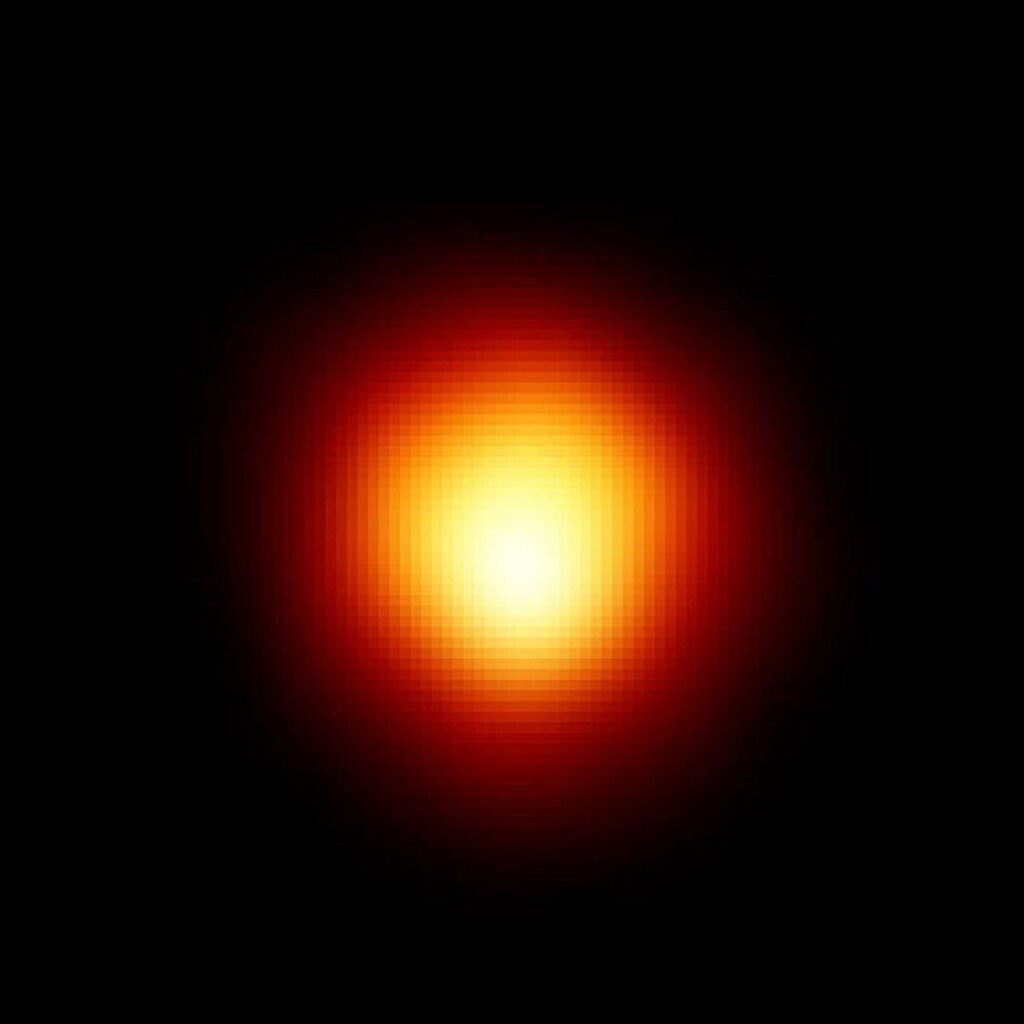
8. **The Post-Main Sequence Journey: Red Giants and Beyond**
What happens when a star, having diligently fused hydrogen for billions of years, finally exhausts its core supply? For stars at least 0.4 times the mass of our Sun, a truly spectacular transformation begins. The core, now mostly helium, contracts, and hydrogen fusion ignites in a shell surrounding it. This causes the star’s outer layers to dramatically expand and cool, ushering in the iconic red giant phase—a far cry from its main-sequence self.
Imagine our own Sun, in about five billion years, undergoing this very change. It’s projected to swell to an astounding maximum radius of roughly one astronomical unit, which is 150 million kilometers, making it 250 times its current size! During this expansion, it will shed a considerable 30% of its present mass back into the cosmos. While it expands, some red giants may even begin fusing heavier elements within their core or in new shells.
As the hydrogen-burning shell continually produces more helium, the helium core grows denser and hotter. For red giants up to about 2.25 solar masses, this helium core becomes incredibly compact and degenerate before its temperature finally rises enough to ignite helium fusion in an explosive event known as a helium flash. This causes the star to rapidly shrink in radius, increase its surface temperature, and settle onto a new evolutionary track called the horizontal branch. More massive stars, however, avoid this dramatic flash, starting helium core fusion before degeneracy sets in, spending an extended period in what’s known as the red clump before also moving to the horizontal branch.
Following the core helium fusion phase, a star then begins to fuse helium in a shell around its increasingly hot carbon core. This marks the asymptotic giant branch (AGB) phase, an evolutionary path that mirrors the earlier red-giant phase but with even higher luminosity. AGB stars are prone to thermal pulses, which are instabilities in their core that cause variations in luminosity and lead to significant mass ejection from the star’s atmosphere, forming beautiful planetary nebulae and enriching the interstellar medium with freshly forged elements like carbon and oxygen.
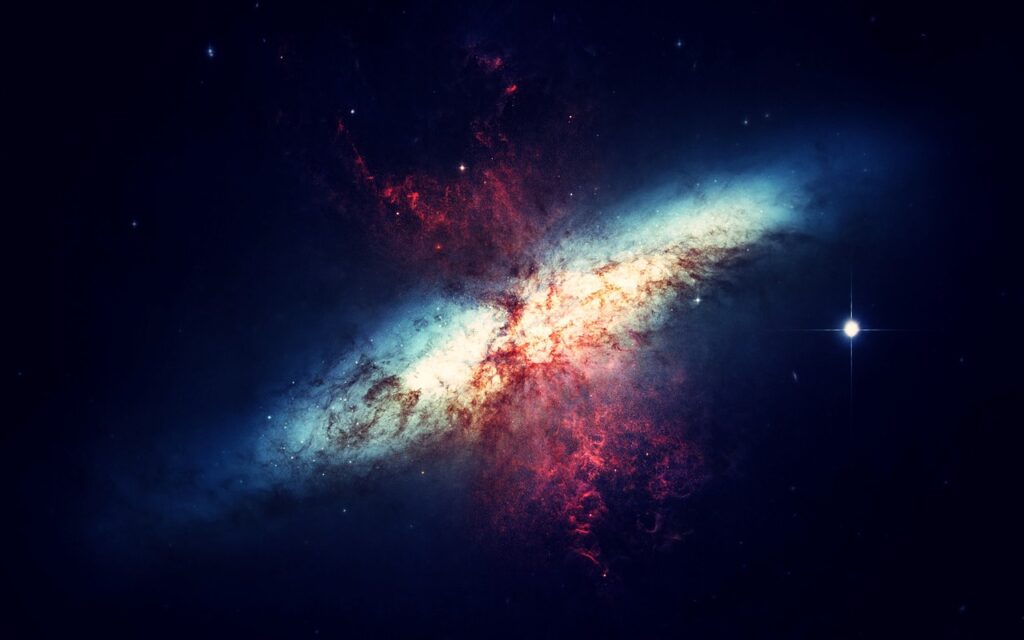
9. **Giants Among Giants: The Evolution of Massive Stars**
While low-mass stars meander towards a gentler, more prolonged end, the journey for truly massive stars—those exceeding about nine solar masses—is a blazing, high-octane spectacle. After exhausting their core helium, these colossal stars expand even further, first becoming blue supergiants and then transitioning into red supergiants, cosmic titans that dwarf even red giants in sheer scale.
Interestingly, not all massive stars become red supergiants. Exceptionally massive stars, those over 40 solar masses (like the central blue supergiant of Orion’s Belt, Alnilam), experience such intense mass loss that they bypass the red supergiant phase altogether. Instead, they can evolve into Wolf-Rayet stars, characterized by spectra dominated by strong emission lines of heavier elements that have been brought to the surface through powerful convection and fierce stellar winds, or by the stripping away of their outer hydrogen layers.
Inside these behemoths, fusion continues in a spectacular, layered process, much like an onion. After helium is depleted, the core contracts, and temperatures and pressures surge high enough to ignite progressively heavier elements: carbon, then neon, followed by oxygen, and finally, silicon. Each element fuses in a distinct shell, with hydrogen burning in the outermost layer, helium in the next, and so on, creating a complex, nested structure of thermonuclear furnaces.
This grand fusion chain culminates with the production of iron. And here’s where the cosmic drama takes a critical turn: iron nuclei are more tightly bound than any heavier nuclei, meaning that any attempt to fuse elements beyond iron *consumes* energy instead of releasing it. This marks the end of sustained energy production from fusion. Before this ultimate collapse, some massive stars, particularly luminous blue variables, are so unstable they violently shed mass into space in events called supernova impostors, temporarily brightening to an astonishing degree, as famously observed with Eta Carinae in the 19th century.
Read more about: Cosmic Confessions: Unearthing the Astonishing Secrets Buried Within the Stars – A Deep Dive into Celestial Mysteries
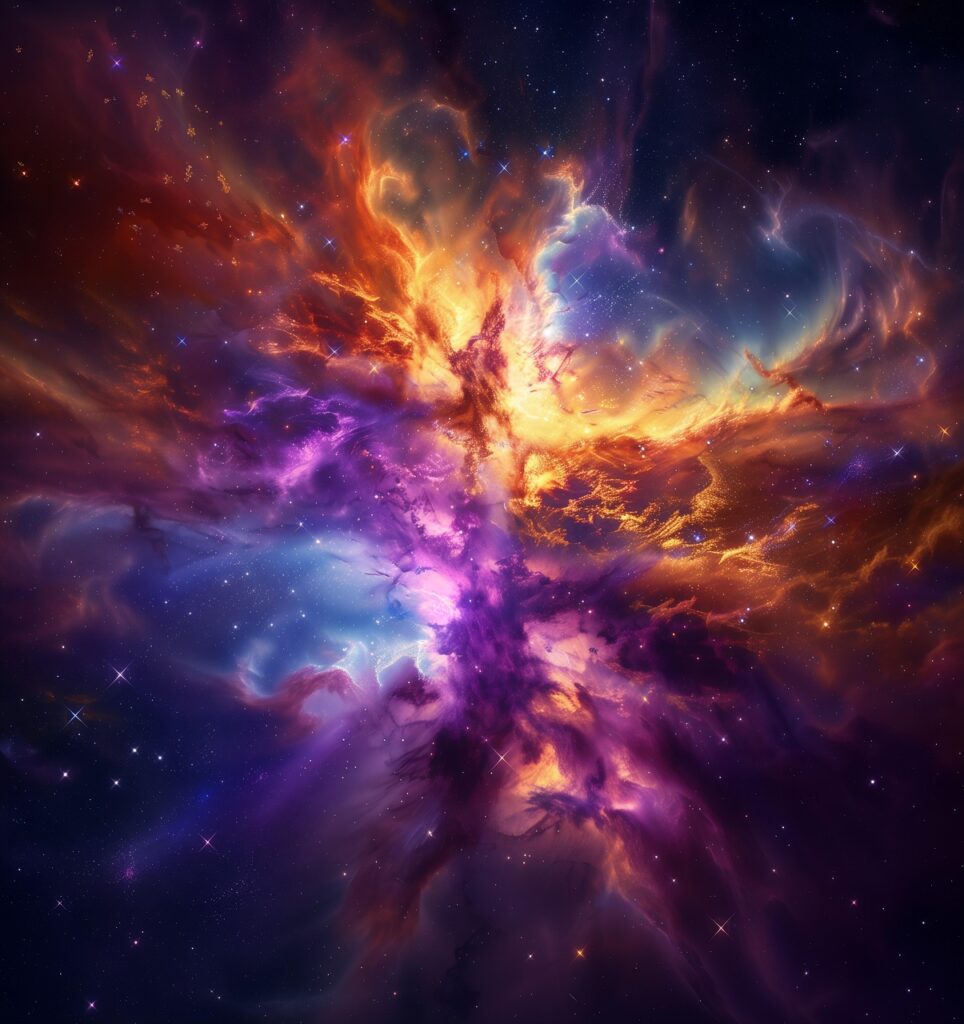
10. **The Gentle Demise: White Dwarfs and Planetary Nebulae**
When a star, after its main-sequence and giant phases, has depleted its nuclear fuel, its core begins an inexorable shrinkage. The immense radiation pressure emanating from this shrinking core becomes so intense that it powerfully pushes away the star’s outer layers of gas. This spectacular ejection forms a beautiful, expanding shell of luminous gas known as a planetary nebula – a misnomer, as it has nothing to do with planets, but its round, planet-like appearance through early telescopes inspired the name.
What remains after this atmospheric shedding is the stellar core itself. If the mass of this remnant is less than approximately 1.4 times the mass of the Sun (a limit known as the Chandrasekhar limit), it continues to shrink to a relatively tiny object, roughly the size of Earth. This dense, compact, and incredibly hot stellar corpse is what we call a white dwarf. Its matter is so tightly packed that it’s no longer a plasma; instead, it’s held up against further gravitational collapse by the quantum-mechanical pressure of electron-degenerate matter.
Crucially, white dwarfs lack the necessary mass to generate sufficient gravitational compression to ignite any further nuclear fusion reactions. Their days of burning are over. Instead, they slowly cool over an incredibly vast expanse of cosmic time, radiating away their residual heat. Eventually, after trillions upon trillions of years, they are theoretically predicted to fade completely into cold, dark, and theoretical “black dwarfs,” although the universe isn’t old enough for any black dwarfs to have formed yet.
Read more about: Seriously, The One Astronomical Star Fact That Will Absolutely Ruin Your Perception of the Night Sky
11. **Cosmic Cataclysms: Supernovae, Neutron Stars, and Black Holes**
For the most massive stars, those that have forged an iron core exceeding 1.4 solar masses, the end is far from gentle; it’s a cataclysmic explosion of unparalleled violence. When this iron core can no longer support its own immense weight against gravity, it collapses with astonishing speed. Its electrons are brutally driven into its protons, forming neutrons, neutrinos, and gamma rays in a burst of electron capture and inverse beta decay.
This sudden, implosive collapse generates an incredibly powerful shockwave that rips through the star’s outer layers. The result is a supernova explosion, an event so incredibly bright that it can briefly outshine an entire galaxy of hundreds of billions of stars! Historically, when these stellar fireworks have occurred within our own Milky Way, ancient observers, who had no telescopes, marvelled at them as “new stars” appearing in the night sky where none had been seen before.
After the supernova explosion blows away the star’s outer layers, scattering a wealth of heavy elements across the cosmos (leaving behind breathtaking remnants like the iconic Crab Nebula), what remains of the core is determined by its initial mass. If the remnant core is between approximately 1.4 and 3 solar masses, it’s compressed into an incredibly dense object just a few kilometers across: a neutron star. These exotic objects are so compact that a single teaspoon of their material would weigh billions of tons, and they sometimes manifest as pulsars or X-ray bursters.
However, for the very largest stars, those whose remnant cores exceed roughly three times the mass of the Sun, even the incredible pressure of neutron-degenerate matter cannot halt the collapse. Gravity triumphs completely, crushing the core into an infinitely dense singularity, a cosmic abyss known as a black hole. Within the heart of a neutron star, the matter is in a state known as neutron-degenerate matter, and scientists even speculate about the presence of an even more exotic form, QCD matter, deep within its core.

12. **The Universe’s Recycling Program: Stellar Nucleosynthesis**
Beyond their dazzling light and dramatic life cycles, stars serve an even more profound purpose: they are the universe’s ultimate alchemists. It is within the fiery crucibles of stars, and especially during their explosive deaths, that nearly all the naturally occurring chemical elements heavier than lithium are forged through a process called stellar nucleosynthesis. From the carbon in our bodies to the oxygen we breathe and the iron in our blood, we are, quite literally, made of star stuff.
As stars evolve, particularly during their red giant and AGB phases, they experience significant stellar mass loss, gently shedding their outer layers. Then, in the spectacular violence of supernova explosions, they dramatically eject vast quantities of chemically enriched material—elements freshly synthesized in their cores—back into the vast interstellar medium. This continuous cosmic recycling ensures that the raw ingredients for future generations of stars and planets are constantly being replenished and enriched.
These heavy elements, scattered throughout space, become the building blocks for new stars, and critically, for the formation of rocky planets. Without these stellar factories, the universe would remain a much simpler place, dominated only by hydrogen and helium. The outflow from supernovae and the powerful stellar winds from large stars also play an important role in shaping the structure and dynamics of the interstellar medium itself, influencing where and when new stars can form.
This ongoing enrichment is why astronomers observe a fascinating trend in stellar populations: older stars, known as Population II stars, have substantially less “metallicity” (a term astronomers use for all elements heavier than helium) than younger, Population I stars. This difference reflects the fact that the molecular clouds from which these older stars formed had not yet been significantly enriched by previous generations of dying stars, underscoring the beautiful, cyclical nature of star birth, death, and renewal across the eons.
Read more about: Seriously, The One Astronomical Star Fact That Will Absolutely Ruin Your Perception of the Night Sky
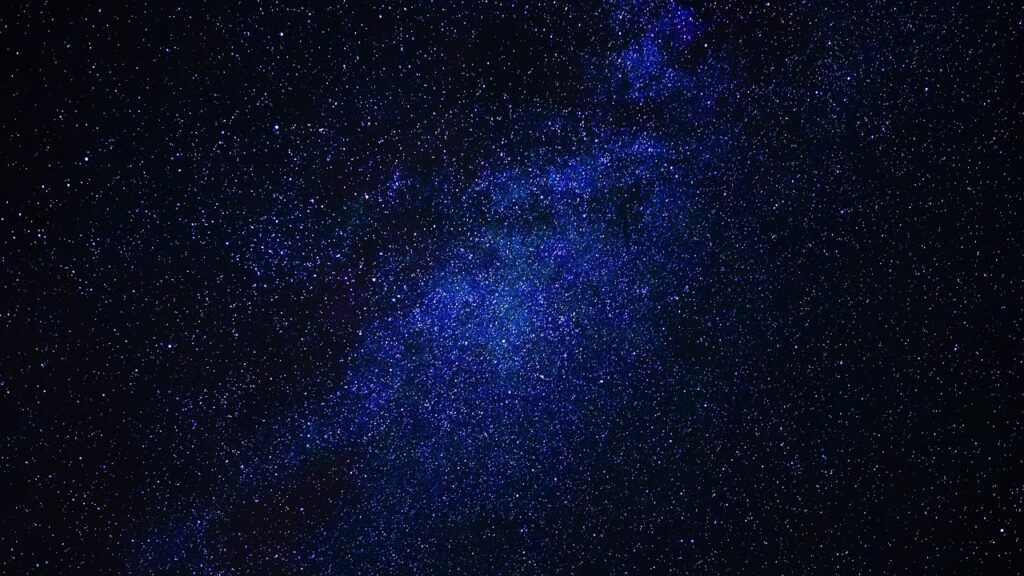
13. **Cosmic Partnerships: The Fascinating World of Binary Stars**
While many popular images depict lone stars shining in the cosmos, the truth is far more intricate and social. Stars frequently form orbital systems with other astronomical objects, including planetary systems, but a significant proportion—around half of Sun-like stars and an even higher percentage of massive stars—are born as members of multi-star systems. The simplest and most common of these celestial dance partners are binary stars, two stars gravitationally bound and orbiting a common center of mass.
These close-knit stellar relationships are not without their drama. When stars in a binary system are close enough, their gravitational interaction can profoundly impact their individual evolution. As one star expands into a red giant, for instance, it might overflow its Roche lobe—the region where its material is gravitationally bound to it—and transfer some of its mass to its companion. This mass transfer leads to extraordinary phenomena, including contact binaries where the stars literally touch, cataclysmic variables, the puzzling blue stragglers, and even the spectacular Type Ia supernovae. It can even lead to the Algol paradox, where the more evolved star in the system is paradoxically the least massive due to extensive mass transfer.
The abundance of binary systems means their evolution is intensely researched, as they are crucial for understanding various cosmic events. Their gravitational interactions and mass exchanges can significantly influence the frequency and types of novae and supernovae, the formation of certain exotic types of stars, and the overall enrichment of space with the products of nucleosynthesis. They are not merely companions but active participants in each other’s destinies.
Indeed, the influence of binary star evolution on the formation of evolved massive stars, such as luminous blue variables, Wolf-Rayet stars, and the progenitors of certain classes of core-collapse supernovae, is a hotly debated topic. Some astronomers theorize that single massive stars simply cannot expel their outer layers fast enough to account for the observed numbers and types of these evolved stars, or to produce the specific supernova progenitors we see. In this view, mass transfer through gravitational stripping in binary systems could be the elegant solution to these cosmic puzzles, highlighting just how interconnected stellar lives truly are.
Read more about: Celestial Luminaries: An In-Depth Journey Through the Extraordinary Lives of Stars
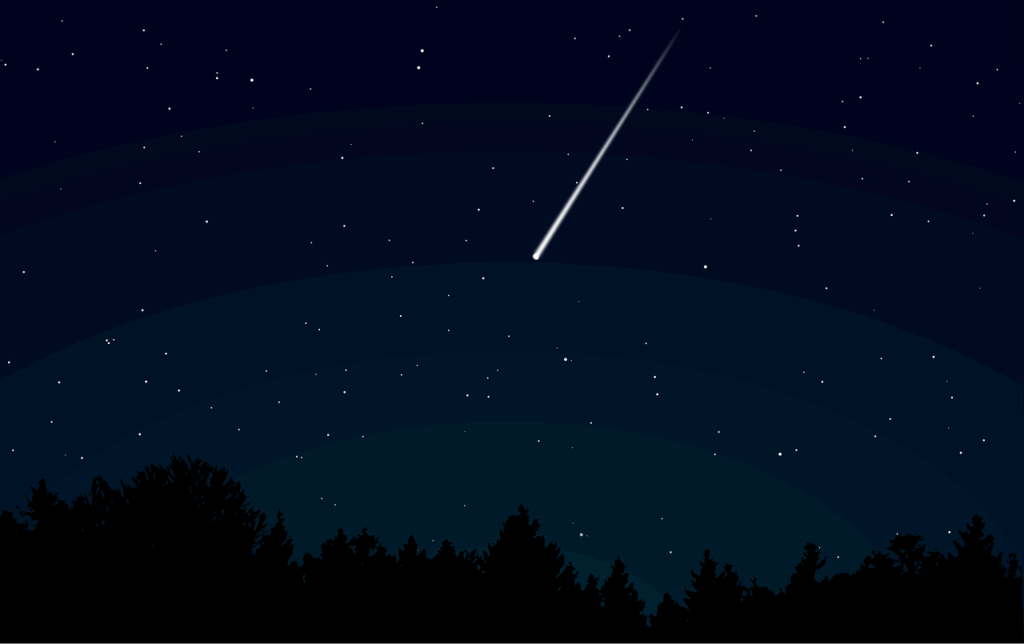
14. **A Universe of Stars: Their Grand Distribution**
Looking out into the cosmos, it quickly becomes clear that stars are not simply scattered uniformly. Instead, they are magnificent congregators, normally found grouped into immense structures called galaxies, along with vast quantities of interstellar gas and dust. Our own Milky Way, a typical large spiral galaxy, is home to hundreds of billions of stars, and the observable universe, in turn, contains more than two trillion galaxies, though many are considerably smaller than our home galaxy.
When you try to quantify the sheer number of stars, the figures become truly mind-boggling. Astronomers estimate there are likely between 10^22 and 10^24 stars across the entire observable universe – a number so vast that it far exceeds all the grains of sand on planet Earth! While most of these stars reside within galaxies, a fascinating minority, between 10% and 50% of the starlight observed in large galaxy clusters, may actually originate from stars that exist *outside* of any specific galaxy, free-floating in intergalactic space.
Within galaxies, stars often organize themselves further into multi-star systems or even larger groups called star clusters. A multi-star system consists of two or more gravitationally bound stars orbiting each other, often structured hierarchically for orbital stability, with binary stars being the most common form. Larger groups are known as star clusters, ranging from loose stellar associations with just a few stars, to open clusters with dozens to thousands, and ultimately to enormous globular clusters containing hundreds of thousands of stars, all orbiting their host galaxy. Intriguingly, the stars within a given cluster all typically form from the same giant molecular cloud, thus sharing similar ages and compositions.
The prevalence of binary and multi-star systems is a key aspect of stellar distribution. It’s particularly true for very massive O and B class stars, with an estimated 80% being part of multiple-star systems. However, the proportion of single star systems increases as stellar mass decreases. For instance, only about 25% of red dwarfs are known to have stellar companions. Given that red dwarfs constitute a staggering 85% of all stars, this means that more than two-thirds of the stars in the Milky Way are likely single red dwarfs, solitary beacons in the cosmic dark. Yet, a compelling 2017 study of the Perseus molecular cloud even suggested that *all* stars might initially form as binaries, with some later splitting up to leave behind single stars, challenging our very notions of stellar solitude.
Read more about: Beyond the Wrench: What ‘Mechanics’ (The Science!) Secretly Thinks About Every Movement You Make.
From the quiet, endless burn of red dwarfs to the spectacular, life-giving supernovae of massive stars, the universe is a ceaseless symphony of stellar activity. These luminous orbs, far from being static points of light, are the dynamic architects of the cosmos, recycling matter, forging elements, and dancing in intricate ballets across the vast expanse. They are the true engines of creation, shaping galaxies and providing the very ingredients for life itself. The more we learn about them, the more we understand our own profound connection to this grand cosmic drama, reminding us that we, too, are intricately woven into the magnificent tapestry of stars.

